#hanyu yuzuru
Explore tagged Tumblr posts
Text

Bow and Arrow
3A to Twizzle's
#BOWANDARROW
145 notes
·
View notes
Text










yuzuru hanyu: echoes of life // saitama, 2024.12.07
#yuzuru hanyu#hanyu yuzuru#fskateedit#figure skating#echoes of life#program#haven't stopped thinking about this since i watched it#i think it might be my favorite of his shows#there's less skating in a conventional sense but a more cohesive story#his shows are really hard to gif because you have to watch the whole thing to get the intended experience#love to see all the creative things my retired faves are doing lately#(just saw that papadakis/hubbell are doing art on ice and i'm so excited)
374 notes
·
View notes
Text
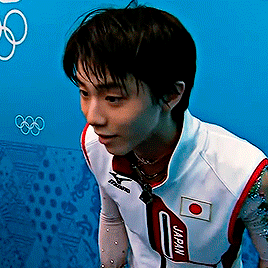

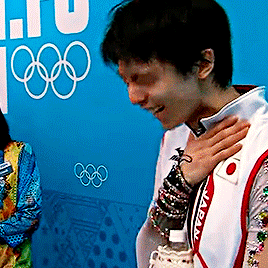

10 years ago Yuzuru Hanyu was getting his first Olympic gold 🥇🥹
880 notes
·
View notes
Text


Yuzuru Hanyu for GOETHE (2025) and FS Life (2024) magazines
77 notes
·
View notes
Text
This is a very important shot.
56 notes
·
View notes
Text
Highlights from this article:
Corey and Nikolaj putting together a "figure skating bible"
Corey and Nikolaj living their best figure skating bromance including picking music for each other and wearing the same clothes
Matteo being a designated member of their daily "knights of the round table lunch"
Corey being a Deniss stan: “When Deniss [Vasiljevs] was here doing his La Bayadere program, I stopped my warm-up,” Circelli said. “I was watching that. That's the kind of skating I live for. Ballet to me is like the root.”
Corey being a Yuzuru stan: “He took the bus to the rink. We would be on public transport together,” Circelli said. “He's just this guy and then he gets into the rink and you're like, ‘Oh no, that's a superstar’.”
Corey's parents met at the Milano Ice Skating Arena and that's why he wants to make his Olympic debut there and if not he but Nikolaj makes it into the Olympic team he's going to cheer him on with pom-poms.
56 notes
·
View notes
Text
"You'll be visited by the three spirits"
The three spirits:

this picture is super fucking stupid omg LMAO
#figure skating#figure skater#hanyu yuzuru#nobunari oda#Idk who's the other guy HELP#ice skating#silly goofy mood#yuzuru hanyu
112 notes
·
View notes
Text
[2025.04.03] KISS & CRY -THE STAGE4 - Jeffrey Buttle Interview

— I heard that you were in charge of the choreography for the Piano Collection in the ‘Echoes of Life’ TOUR. How did you come to be in charge?
I was contacted directly by Yuzu, and he asked me, ‘I want you to choreograph a medley of short piano pieces.’ He gave me a list of the pieces, and among them were some that reminded me of Chopin’s ‘Ballade No. 1,’ which I had choreographed for him before. He specified some elements he wanted to include, like ‘I want to put a quad toe loop here,’ but otherwise he told me to just have fun choreographing however I wanted. Unlike competitive programs, which have many rules and restrictions, I was able to use my creativity to the fullest. It had been a while since I received a request from him, so I was very happy and honoured.
— Was there an explanation of the concept of this ice show?
I heard that the theme was about the past, present, and future. And Yuzu explained to me that he wanted to express a personal timeline.
— Was the idea of a medley of piano pieces something that came from Hanyu?
Yes, the idea of using many small pieces was his. When I received the request, the first thing I asked was at what part of the show and in what way the choreography would be used. That’s because the choreography I create is never easy and takes quite a bit of physical stamina, so I wanted to confirm where in the overall show it would be performed. I know he has extraordinary stamina, but still...
— What was the choreography process like?
Since I couldn’t go to Japan, we exchanged videos. First, I sent him a video of me skating, and in return I received a video from Yuzu with a much higher level of performance than mine (laughs). We kept going back and forth like that. Basically, we worked on it through emails, conversations, and videos. We had worked this way a few times before, so it wasn’t a problem.
— What was the most important aspect you focused on while choreographing?
The most important thing was ‘how to express the emotions conveyed by each piece of music.’ I especially focused on the connecting steps, which are the foundation of skating. This is very important in figure skating, and it was an enjoyable process. Since I couldn’t film myself skating, I asked Yonathan Elizarov, a Canadian pair skater who was also a representative at the World Junior Championships, to help and actually perform it. When I showed him the video that Yuzu sent back, he was amazed at how high the quality was. It was very fun to have a future champion participate in this process.
— The arrangement was done by pianist Shinya Kiyozuka. Do you know him?
I didn't know him, but he's a pianist who has worked with Yuzu for many years in various places. It was a very good arrangement and I think it's a wonderful collaboration.
— Have you actually seen the show? Actually, I was sent a video, but I couldn’t download it properly. Right now, I’m waiting for a new download link, so I’ve only seen part of it so far.
Ballade No. 1" that matures and evolves
— He also performed "Ballade No. 1," which you choreographed.
I saw that part! It's not a simple piece, so I can't believe he performed it at the end of the piano medley. What kind of physical strength does he really have? I can't imagine it.
— Hanyu has continued to perform the program you choreographed during his competitive years even after turning professional. How do you feel about the changes in his performance?
It’s such an honor that he’s still performing programs I choreographed. What’s amazing about Yuzu is that he continues to evolve mentally and artistically. It’s similar to when Joni Mitchell sings her older songs. It carries a different flavour than when she was younger. Yuzu is the same. When he performs an old program now, you can clearly see how much he’s evolved and matured both as a skater and as a person. The way he expresses subtle nuances in the music, the way he handles every note, it all keeps changing, and it’s mesmerizing to watch.
— Since retiring from competition, Hanyu has continuously produced solo shows. What do you think about that?
I’ve never heard of anyone performing an ice show entirely alone from start to finish. But since I know Yuzu well, it wasn’t all that unexpected. He has the ability and special talent to captivate an audience for two and a half hours. I hope the audience understands just how special an experience it is to see his show. Honestly, except for Yuzu, I don’t think we’ll see another show like this again anytime soon. Performing continuously for two hours on the ice is on a completely different level from a concert. It’s a special talent, a gift. Usually, including myself, athletes stop training at a competitive level after retiring. But Yuzu has kept at it, and that’s why he’s capable of something like this.
— If you could freely choose, what pieces would you like to choreograph for Yuzu?
Actually, I already have a few pieces in mind. One is Alexander Scriabin’s Symphony No. 4, Poem of Ecstasy. There’s music that, when you listen to it, brings an image of a skater to mind, and sometimes you think, ‘Only that skater could skate to this.’ I came across this piece back when I was still competing and looking for music, but I thought it would be impossible for me to skate to it. But I’ve always kept it in my heart. And I think Yuzu could definitely pull it off. The other is the final movement of Ottorino Respighi’s symphonic poem “Pines of Rome.” The melody builds more and more, getting bigger and bigger, so it’s a piece that can’t be performed unless you have unbelievable stamina. I think Yuzu has that ability. If I ever get the opportunity, I would love to choreograph these pieces for him.
— Hanyu recently celebrated his 30th birthday. What does the age 30 mean for a figure skater?
Personally, turning 30 wasn’t an issue for me. It was turning 20 that scared me the most. Like gymnastics, figure skating is often seen as a sport where youth is an advantage. If you have talent, people say, ‘Wow, he can already jump like that at such a young age.’ But when I was 20, I hadn’t achieved much as a skater yet, so I was afraid. But later I understood that each skater grows at their own pace. I hope Yuzu feels pride not only in how much he’s achieved, but also in how much he’s contributed to the sport as a whole. And to think that someone who’s achieved so much is still only 30 is actually surprising.
— You became a world champion at 25, right?
Yes. Then I retired at 26. At 30, I was doing what I wanted, and it was a very fulfilling time. I had always loved skating, but I didn’t really enjoy competing. So being able to focus on tours and ice shows at 30 was a very happy time for me.
— What are your goals for this year? It’s hard to say something specific, but to keep doing what makes me feel happy. Besides choreography, I’m also working as a coach now. People have to make choices every day, and with any choice comes challenges. There are fun times, and not-so-fun times. But I think it’s important to listen to your heart and go in the direction you truly want.
— Thank you. Lastly, could you give a message to Hanyu?
What Yuzu has accomplished is the result of his own hard work and passion, and I’m very proud that he still shares that passion with people even now. He could have chosen to retire and live an easier life. But he keeps pushing himself, continues making effort, continues growing. I think he is a true icon.
Source: 20250403 KISS & CRY -THE STAGE4-
#hanyu yuzuru#yuzuru hanyu#羽生結弦#figure skater#figure skating#jeffrey buttle#figure skating choreography#magazine#interview#machine#translation#echoes of life#ice story
57 notes
·
View notes
Text
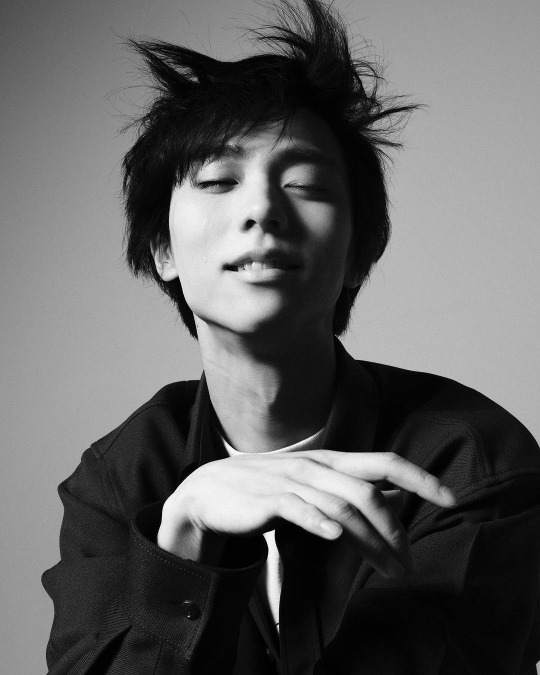
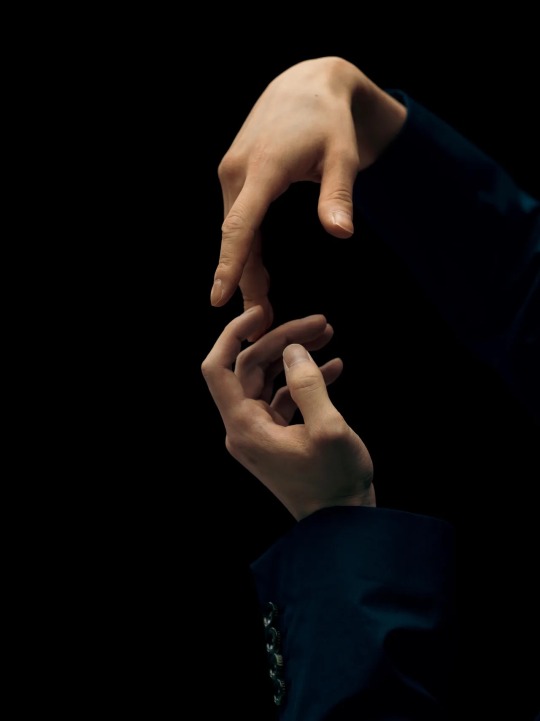
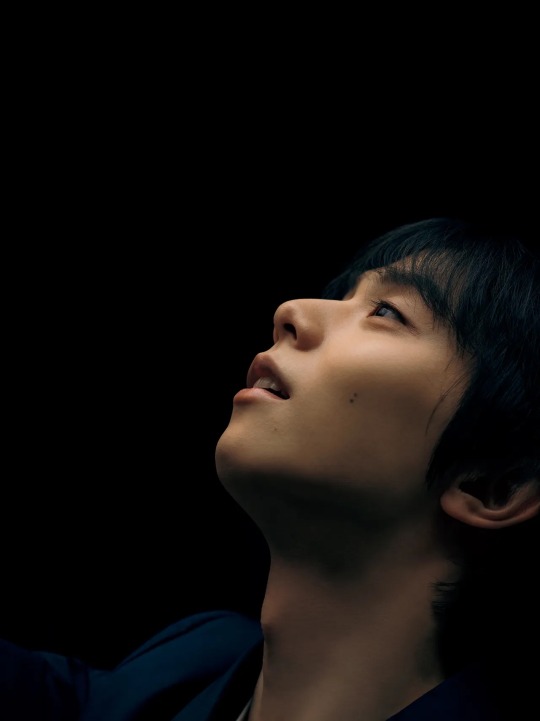
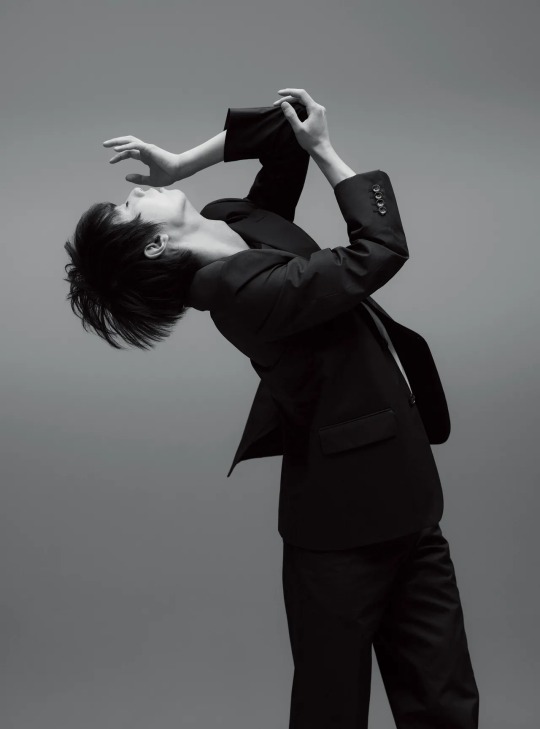
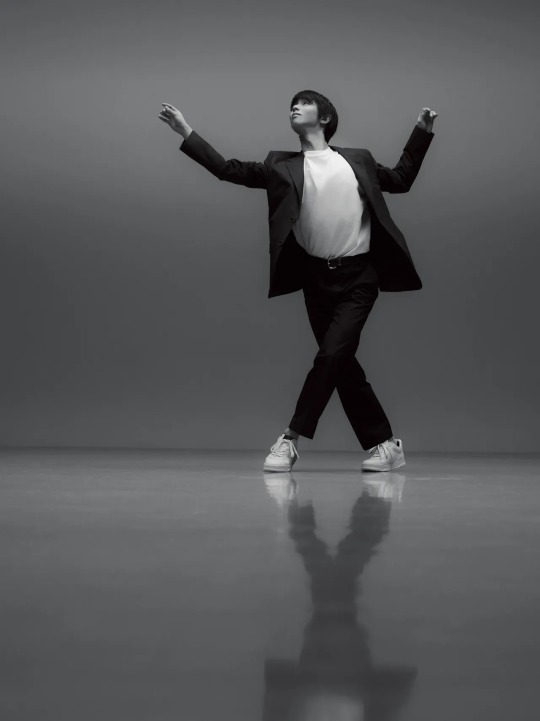
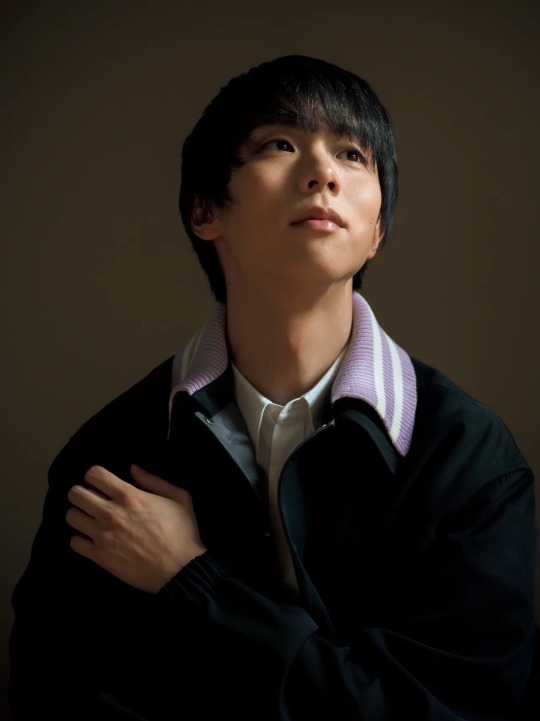


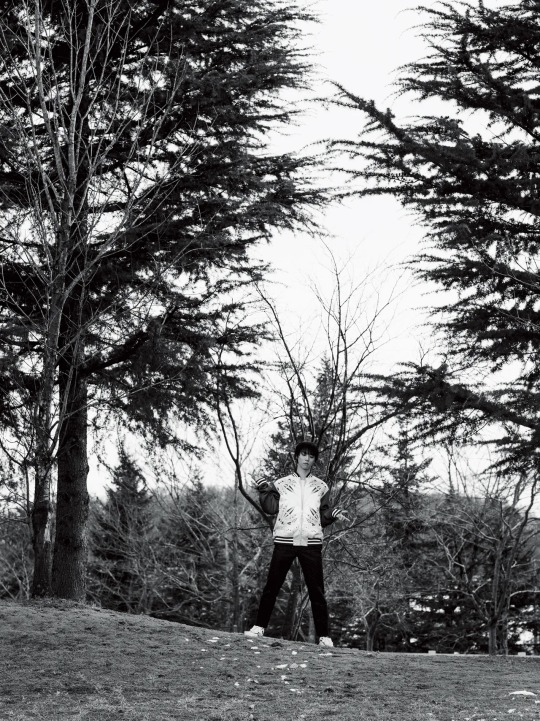
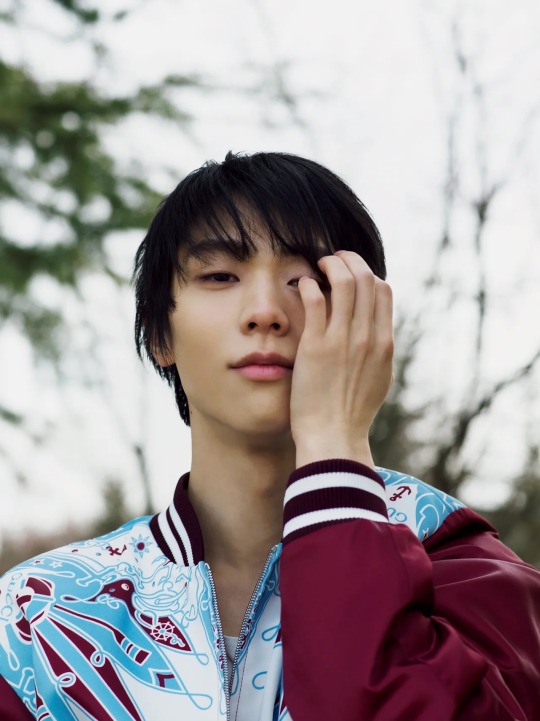
These HQ photoshoot is something else. Yuzuru Hanyu, is a one in a generation, one in a millennia, a phenomenon.
Yuzuru Hanyu for GQ and Gucci, 2024.
224 notes
·
View notes
Text
my sister asked me about what REAL guys I find hot and I could only come up with the following:
the voice actor for Ivan from alien stage (Ivan is gay)
the figure skater who was the inspiration for yuuri katsuki from yuri on ice (yuuri is gay)
the actor for roronoa zoro in the live action one piece (zoro is gay)
#park byeong hoon#hanyu yuzuru#mackenyu#alien stage#alnst#alnst ivan#ivan#yuri on ice#yoi#yuuri katsuki#katsuki yuuri#one piece#live action one piece#roronoa zoro#zoro roronoa
24 notes
·
View notes
Text
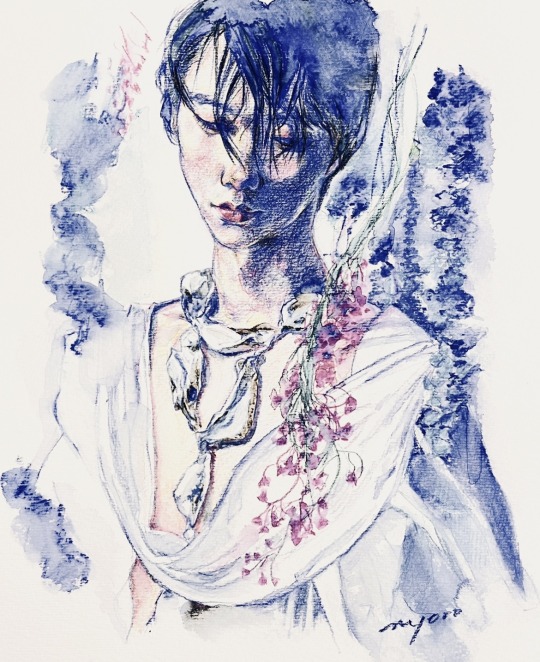
HANYU YUZURU
X
NINAGAWA MIKA
AERA 2023
#yuzuru hanyu#hanyu yuzuru#yuzuru hanyu fanart#figure skating#aera#yuzu#mika ninagawa#artwork#fanart#illustration#sketch#fan art#my art#watercolor#羽生結弦
95 notes
·
View notes
Text

Yuzu and Coach Pooh on the 1st day of the Chiba performance of "Echoes of Life
Two are sweet☺️💗
68 notes
·
View notes
Text






yuzuru hanyu: cutscenes from echoes of life // saitama, 2024.12.07
#yuzuru hanyu#hanyu yuzuru#echoes of life#figure skating#idek how to tag this#love how he just shot an entire scifi short film for his ice show#just yuzu things
272 notes
·
View notes
Text







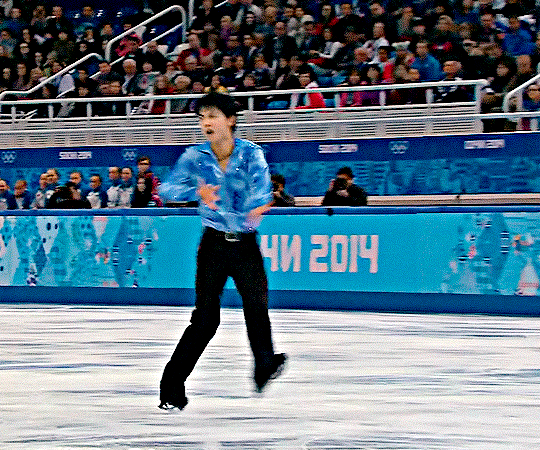




Yuzuru Hanyu performing his short program 'Parisienne Walkways' on Sochi Olympics 2014.
#yuzuru hanyu#hanyu yuzuru#羽生結弦#figure skating#sports#sochi olympics#sochi 2014#yuzuru hanyu parisienne walkways#parisienne walkways#mygifs
433 notes
·
View notes
Text

✨Yuzuru Hanyu twirling✨
39 notes
·
View notes
Text
Hanyu of Tohoku indeed
25 notes
·
View notes